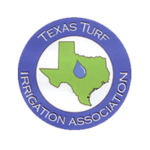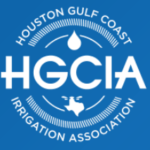- Licensed Irrigator #7430
 Our customers benefit from the knowledge of our Certified Landscape Irrigation Auditor. When performing system audits, we observe system operations, locate irrigation zones, check pressure and flow rates, conduct water application efficiency tests, and identify equipment that is worn, broken or misaligned.
Our customers benefit from the knowledge of our Certified Landscape Irrigation Auditor. When performing system audits, we observe system operations, locate irrigation zones, check pressure and flow rates, conduct water application efficiency tests, and identify equipment that is worn, broken or misaligned.
We can prepare a point-by-point checklist of items that need to be corrected or improved to insure maximum efficiency. Irrigation audits are an effective way to identify deficiencies in irrigation systems.
These problems can include, but are not limited to:
Irrigation systems are designed to operate with head-to-head coverage, where the spray from one sprinkler head reaches to the next, resulting in necessary overlap. Precipitation rates, as they pertain to the system’s efficiency, are based on the assumption that one head hits the next (overlap). Areas where the sprinkler’s spray pattern does not overlap are likely not getting sufficient water and may develop brown, dry areas, or overly wet ones, promoting insect and fungus attack. These dry or soggy areas indicate the system has low “uniformity” of coverage (efficiency). To compensate, one has to run the sprinklers for longer times to get adequate water to the dry spots, while the rest of the lawn is getting over-watered. This can also cause drainage problems.
Based upon soil characteristics, water will soak into the ground at differing rates. Sandy soils have high (fast) infiltration rates, while clay soils have low (slow) infiltration rates. If the precipitation rate of the sprinkler heads exceeds the soil’s infiltration rate, then runoff and erosion occur (especially on slopes). On flat ground, this will also lead to puddling and the percolation of water beyond the effective root zone.
If your sprinklers’ precipitation rate exceeds the soil’s infiltration rate, lower precipitation rate heads can be installed, or one can shorten the watering times and use multiple start times (e.g. 3 start times at 5 minutes each at 1-hour intervals instead of 15 minutes all at once) to allow the water to soak into the soil.
Each sprinkler head is designed to operate within a certain range of pressure. When water pressure is too low, the sprinkler head will emit large drops and likely will not produce the proper spray pattern or a radius that reaches to the next head. If pressure is too high, the head will produce a fine mist, which leads to water loss due to evaporation and “fly-away” in even light winds. In addition, high pressure can lead to over spray and a distorted spray pattern, along with many other problems.
If the spray pattern of a head is distorted, browns spots may develop on the lawn. This may be caused by blockage in the screen or in the nozzle itself, and the head may need to be cleaned. If this does not fix the problem, the nozzle may be worn and needs to be replaced.
There should be no wasteful over spray onto sidewalk, patio, driveway or street. If there is over spray, replace the nozzle with another with the appropriate spray pattern (e.g. 180? instead of 360? or relocate the sprinkler head.)
Make sure that the spray from the head is not obstructed by vegetation or other objects. Trim back vegetation or raise the sprinkler heads as needed. This will increase the system’s uniformity of coverage.



